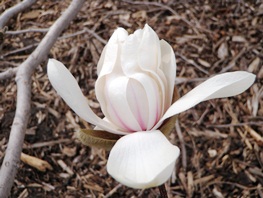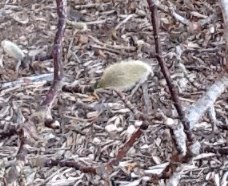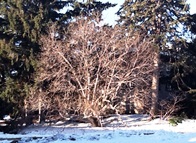One of my favorite early spring blooming plants is the magnolia tree. Magnolias are small trees with amazing flowers in March and April. They seem to always put me in a very happy spring mood. They are my signal to start getting my garden ready for spring planting and to get the cold season vegetables into the ground, if they aren't already planted.
Magnolia FlowerThere are two main types of magnolias that we plant around southeast Nebraska - Magnolia stellata, or star magnolia, and Magnolia x soulangiana, or saucer magnolia. Both of these are beautiful in the spring. The star magnolia blooms with large white flowers and the saucer magnolia blooms with large pink, sometimes white or white and pink, colored flowers. The flower petals are in fact not petals, but tepals, which is a mix between a petal and a sepal. The flowering time on both of these trees is very late in the winter, or very early in the spring, such as late February to early March. The problem with planting a magnolia tree in Nebraska, is our late spring freezes. In the years that we get a late freeze, the blooms are damaged, sometimes very badly, so the trees do not look as beautiful as they should.
Star magnolias will grow to be 15-20 feet tall and 10-15 feet wide. The saucer magnolia is a little bit larger; it grows to 20-30 feet tall. All magnolias have very interesting buds - they are quite large and very pubescent or fuzzy. The fruit on a magnolia tree is unique and is described by Kim Todd, UNL Fuzzy Magnolia BudHorticulturist, as an aggregate of follicles, but it is rarely seen. The leaves on magnolia trees are oblong with pointed tips. Magnolia trees are similar to last month's plant of the month, Cornelian Cherry Dogwood, in that both plants flower before they put any leaves on.
There are many different species, varieties, and cultivars of magnolia to choose from. The saucer and the star magnolia are two of the best performing magnolias for Nebraska. Loebner magnolia is another hybrid magnolia that performs fairly well here, and there is a variety, 'Merrill', that flowers a little bit later in the spring, to hopefully avoid the late freeze. Just make sure that when you decide to plant a Magnolia, you plant it in a protected location around your home, not on the southwest side of a building without wind protection. Magnolia's can be planted in a slightly shady location.
Magnolia trees are mainly used as a specimen tree in your landscape. Other species of magnolias that are found in the southern part of the United States are used as wildlife food, but because the fruits on the Nebraska grown magnolias are so sparse, they do not entice the wildlife here. Other than the blooms being damaged by late frosts, these trees are relatively free of most insects and diseases. They can get infested by an insect called a scale that will look like small particles of white dust all over the branches; this can be fixed with insecticides and will not usually kill the tree. Pruning of magnolia trees should be done just after they flower in the spring because they put their new buds on not long after that. The buds will be present on the tree throughout the fall and winter.
Magnolias can be one of the most beautiful and fragrant trees in early spring in Nebraska. Even if we have a late frost, these trees have beautiful leaves and very interesting, large buds that would add great interest to any landscape, acreage or otherwise. Try one in your landscape today.



